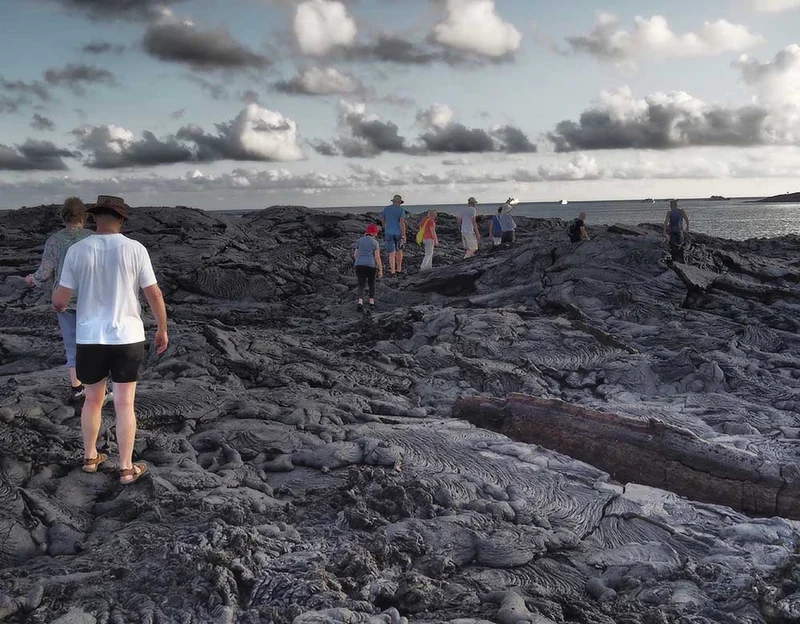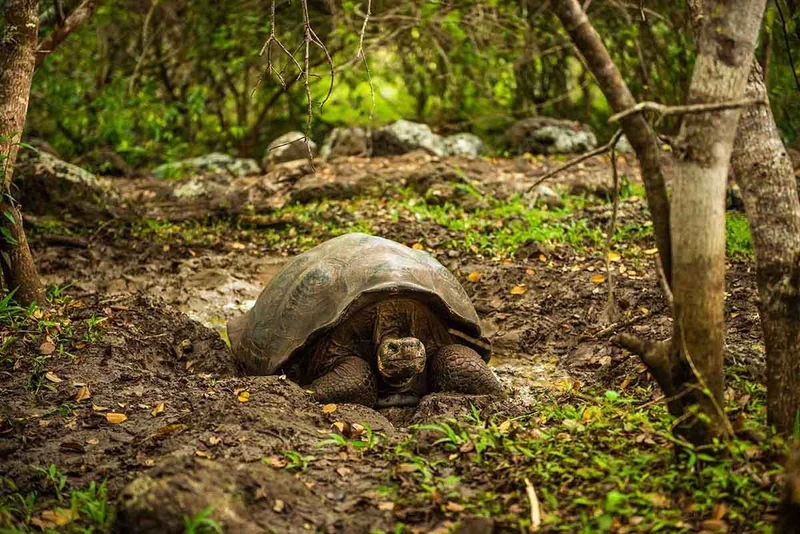
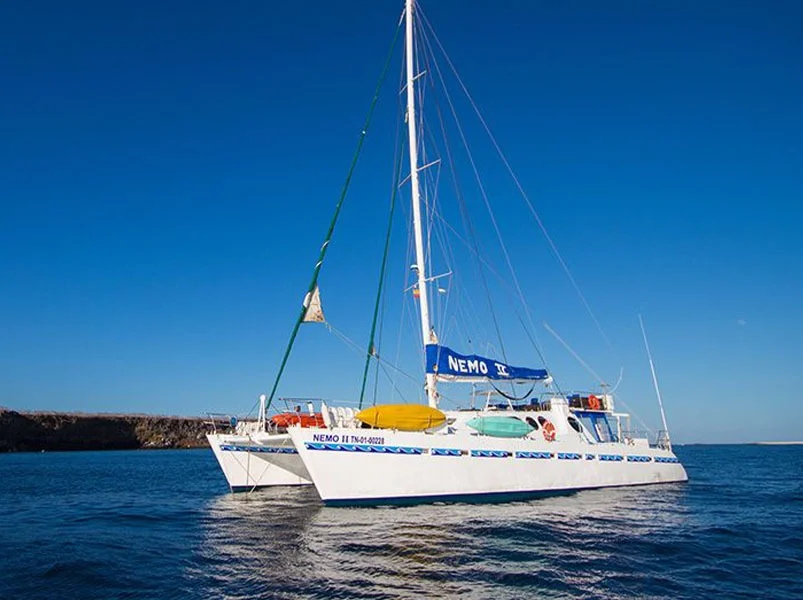
Explore the breathtaking Galapagos Islands on this 8-day cruise adventure. Visit unique sites like Floreana's Post Office Bay, Isabela's Punta Moreno, and Fernandina's Punta Espinoza. Witness giant tortoises, marine iguanas, blue-footed boobies, and playful sea lions. Snorkel with vibrant marine life, hike dramatic volcanic landscapes, and uncover the fascinating human and natural history of the islands.
8 Day Galapagos Itinerary
Day 1: Baltra Island & Santa Cruz Island: Bachas Beach
Arrival to the airport in Baltra, reception by the cruise guide and transfer to the yacht.
Santa Cruz Island: Bachas Beach
Welcome cocktail. Lunch service and navigation to Bachas Beach in Santa Cruz.
Wet landing. Nature walk. Snorkeling.
The name is “Spanglish” for 'barges' which were wrecked offshore during the World War II. A common first landing site, there is a delightful swimming beach here, with a lagoon behind, and a longer beach for a stroll and wildlife watching. The saltwater lagoon behind often has great blue herons and small waders such as sander lings and semi‐palmated plovers. Both beaches are nesting areas for green sea turtles, which leave tracks in the sand to the back of the beach, especially from November to February. The beach offers ample space one can explore at leisure.
Day 2: South Plaza Island & Santa Fe Island
Breakfast service. Dry landing. Visit to South Plaza. Nature walk. Deep water snorkeling.
South Plaza island
Your visit to South Plaza begins with a dry landing. The rocky trail circumnavigates the island displaying the combination of dry and coastal vegetation zone. South Plaza has one of the largest populations of Land Iguanas in the Galapagos. The iguanas seem to be everywhere once you land. These larger than average yellow‐brown land iguanas feed on the fruit and pads of the prickly pear cactus. South Plaza is also home to Marine Iguanas living along the coast and a Hybrid Iguanas whose fathers are Marine Iguanas and mothers are Land Iguanas. As the walk continues along the sea cliffs Swallow‐tailed Gulls, Frigatebirds, Audubon Shearwaters, Red‐billed Tropicbirds, Brown Pelicans, Blue‐Footed and Masked Boobies are frequently seen. Beneath along the shore a colony of Bachelor Sea Lions can be seen.
Lunch service. Navigation to Santa Fe. Dry landing. Nature walk.
Santa Fe Island
Santa Fe Island is home to one of the most beautiful coves in all the Galapagos. It is located in the southeastern part of Galapagos, 2 1/2 hours from Santa Cruz and 3 hours from San Cristobal. Santa Fe was formed from an uplift (rather than a volcano) giving the island a relatively flat surface rather than the typical conical shape of the other islands. Visits to Santa Fe begin with a panga boat ride across the lovely turquoise lagoon. Once ashore you are brought into contact with one of the many sea lion colonies in the Galapagos. Bulls compete for the right of beach master while cows lounge in the sun. It is quite a fascinating sight! The loop trail around the island leads past the salt bushes where Galapagos Hawks can be approached easily. Santa Fe is home to endemic Land Iguanas. These iguanas are the largest in the islands and they are beige to chocolate brown in color and resemble small dinosaurs. Reaching the summit there is a stunning view of the cove beneath.
Guide briefing. Dinner service and navigation to San Cristobal.
Day 3: San Cristobal Island: Witch Hill, Kicker Rock & Lobos Island
Witch Hill
Breakfast service. Visit to Cerro Brujo. Panga boat exploration rides. Wet landing. Nature walk. Deep water snorkeling.
One of the first sites visited by Charles Darwin, Cerro Brujo is a beautiful white sand beach where Brown Pelicans, Blue‐Footed Boobies, sea lions, and marine iguanas are all found. An onshore version of nearby Kicker Rock, Cerro Brujo is a very striking, eroded tuff cone.
Kicker Rock
There is no landing at Kicker Rock. Also known as León Dormido these rocks are located off the coast of San Cristobal. It is the remains of a lava cone eroded by the sea, the two vertical rocks rising 500 feet from the ocean form a small channel that is navigable by small boats. This natural monument has become a favorite sight for cruises due to the many Tropicbirds, Frigates and Boobies that fill the surrounding air. Beneath the sea the nearly crystal waters offer a brilliant show of colorful tropical fish and invertebrates.
Lobos Island
Lunch service and navigation to Lobos Island. Wet landing. Nature walk and more wildlife watching. Deep water snorkeling.
Lobos Island, as its name suggests is famous for its population of sea lions and fur sea lions. You will also encounter nesting grounds for the great Frigatebird and a small number of blue footed boobies. Breeding center, where will be explained, in a simple manner, the natural phenomena that created the Galapagos Islands. That is the geology and the series of natural processes, such as volcanic eruption and marine current locations that have led to the amazing islands that you are now visiting.
Day 4: Española Island: Suarez Point & Gardner Bay
Suarez Point
Breakfast service. Dry landing. Nature walk on Espanola Island Suarez Point.
Suarez point is located on the western tip of Española and it offers great wildlife viewing of such species as Sea Lions, Sea Birds and the largest Marine Iguanas of Galapagos. This is one of the best sites in the Galapagos. The amount of wildlife is overwhelming. Along the beach there are many Sea Lions and large, colorful Lava Lizards and Marine Iguanas. As you follow the trail to the cliff's edge Masked Boobies can be found nesting among the rock formations. After a short walk down to a beach and back up the other side Blue‐Footed Boobies are seen nesting just off the trail.
Gardner Bay
Lunch service. Panga boat exploration rides to Gardner Bay. Wet landing. Gardner Islet, Osborn Islet. Nature walk. Deep water snorkeling. Swimming.
Gardner Bay is a 45‐minute boat ride from Suarez Point. It has a white sand beach and there is a small colony of sea lions. The possibilities for swimming or scuba diving are excellent here. Visitors find migrant, resident, and endemic wildlife including brightly colored Marine Iguanas, Española Lava Lizards, Hood Mockingbirds, Swallow Tailed Gulls, Blue Footed and Masked Boobies, Galapagos Hawks, a selection of Finch, and the Waved Albatross. Snorkel and go on a panga ride at Gardner Islet, and at Osborn Islet snorkel once more.
Guide briefing. Dinner service and navigation to Santa Cruz Island.
Day 5: Santa Cruz Island: Highlands, Rancho Primicias & Charles Darwin Station
Highlands & Rancho Primicias
Breakfast service. Visit to Santa Cruz Highlands. Dry landing.
The highlands of Santa Cruz have incredible zones of vegetation. Visit to the private estate “Las Primicias”. This reserve offers you one of the best possibilities to see the huge turtles of Santa Cruz Island in their natural habitat. You can observe them from very close.
Charles Darwin Station
Lunch service. Visit to Charles Darwin Scientific Station and Breeding Center. Dry landing.
The main visit in Puerto Ayora is to Charles Darwin Station. An excellent way to begin learning about the islands, their origin and formation. You will learn about how the Galapagos turtles are raised and meet Jorge, the famous solitary turtle. The Scientific Station has its own beach that receives many visitors on weekends.
Guide briefing. Dinner service and navigation to Floreana Island.
Day 6: Floreana Island: Cormorant Point, Champion Islet & Post Office Bay
Breakfast service. Visit to Floreana Island: Cormorant Point, Champion Islet, Baroness Viewpoint. Wet landing. Nature walk. Possible activities: shallow water snorkeling, kayaking, panga boat exploration rides.
Cormorant Point
The visit to Cormorant Point offers two contrasting beaches. Arriving on shore you will encounter a green sand beach (the green sand is caused by the olivine crystals derived silicates or magnesium and iron). From here you will follow the trail leading to a lagoon where Pink Flamingoes and other shore birds can be seen in the distance making their home. If you look closely at the mud of this lagoon, there appears to be 'cracks' in the mud. These cracks are not caused from dryness but are actual flamingo footpaths. This is also a good spot for seeing Large‐Billed Flycatchers, Small‐Ground Finches, Medium‐Ground Finches or Cactus Finches. The walk continues to another beach on the other side made of fine white sand particles known as "Flour Beach". In the waters Ghost Crabs and Rays can be seen swimming. Time and weather permitting you may even go for a swim or a snorkel. Other activities include a panga ride to Champion Point and kayaking at Baroness Viewpoint.
Post Office Bay
Lunch service. Panga boat ride to Post Office Bay. Wet landing. Nature walk. Snorkeling from the beach.
In 1793 British whalers established the Post Office Barrel to send letters to and from England. This tradition has continued over the years, and even today visitors may drop off and pick up letters, without stamps, to be carried to far destinations. This is one of the few visitor sites that is visited for its human history. Whaling Captain James Colnett established the wooden post barrel in the early 1793. At the time whaling was a big industry, ships were typically gone for 2 years at a time. The Galapagos Islands were a frequent stop for these ships. Outbound ships would drop off letters after rounding the cape and the ships returning home would mail them. Over the years thousands of ships have stopped to send and receive mail at Post Office Bay. Many have posted a sign of driftwood or other materials memorializing their visit. This is the only area in the Galapagos were graffiti is still acceptable.
Arriving at Post Office Bay you will land on a brown sand beach, passing the sea lions lying in the sun. At the post barrel the guide will pull a handful of letters for the group. Continuing the tradition, the letters are brought home with the traveler and then mailed to the addressee. Visitors also have the opportunity to send letters of their own. There are also the remains of a Norwegian Fishing Village a commercial fishing operation established in 1926 and abandoned a couple of years later. The group of Norwegians arrived with dreams of riches started a fishing and canning operation on $900 each. The tough Galapagos life and a few misfortunes had them abandon their dreams.
Time and weather permitting you may have the opportunity to snorkel again from the beach.
Guide briefing. Dinner service and navigation to Santiago Island.
Day 7: Santiago Island: Chinese Hat & Bartolome Island
Santiago Island: Chinese Hat
Breakfast service. Visit to Santiago Island. Wet landing at Chinese Hat. Nature walk. Deep water snorkeling.
Visit to Chinese Hat, a tiny island just off the southeast tip of Santiago. Its name describes the island's shape. Those visitors who travel to the island will find its special landscape worth the visit. Though centrally located it is one of the least visited sites in the area. National Park Service restrictions have limited the number of visitors to Chinese Hat. Multi‐day cruises with 14 passengers or less are the only ones permitted at this site. The landing is on a beautiful crescent‐shaped white sand beach, home to Sea Lions and Sally Lightfoot Crabs. The trail on Sombrero Chino's explores its volcanic origin, one of the most evident in the islands.
The lava rock is very fragile and tends to break off when people walk over it. The sharp outcroppings caused from these breaks make it necessary to wear good walking shoes. Patches of Pahoehoe Lava, cracked lava and lava tubes can be found on the island. While the path does not lead up the striking red rust sides of the Chinese Hat to the caldera, it does venture high enough on the island to offer some spectacular views of the waves crashing below. Snorkeling in the waters near Chinese Hat can create a stir; white‐tipped sharks frequent the area, as do the playful Galapagos Penguins and Sea Lions.
Bartolome Island
Lunch service. Deep water snorkeling. Visit to Bartolome. Dry landing. Nature walk.
This desolate island with few plants is the most visited and most photographed island in the Galapagos. The island consists of an extinct volcano and a variety of red, orange, green, and glistening black volcanic formations. The best known of the island's features is the Tuff Cone known as Pinnacle Rock. This large black partially eroded lava formation was created when magma expelled from the volcano reached the sea. When the seawaters cooled the hot lava it caused an explosion. The exploded particles eventually fasten together forming a rock composed of thin layers. Bartolome's Pinnacle Rock has become one of the best recognized and most photographed sights in the islands. A prominent sight it was used as a target for US airmen during WWII. Lying beside the Pinnacle Rock are twin half-moon shaped beaches.
The northern beach is a popular snorkeling site where visitors have the opportunity to swim with fish, Sea Lions and Galapagos Penguins. Much larger animals can be found near the southern beach including stingrays, spotted eagle rays, white‐tipped sharks, and black‐tipped sharks. Little vegetation grows in this barren place. Mangroves border the beach and the small shrub Tiguilia grows in the volcanic sands. The seeds and tiny white flowers of the Chamaesycae provide food for the island's finch. These plants are common to arid regions and are able to survive in these harsh volcanic conditions.
Day 8: Santa Cruz Island: Black Turtle Cove & Baltra Island
Panga boat ride to Black Turtle Cove. Breakfast service. Check out and airport departure at 8 AM.
In the morning, a panga boat ride to Caleta Tortuga, also known as Black Turtle Cove. There is no landing at this sight. It is located on the north side of Santa Cruz Island and the way to reach it is by a panga boat (motorized canoe). You will be able to see its mangrove swamp where marine turtles are nesting during certain seasons of the year, as well as sharks and rays.

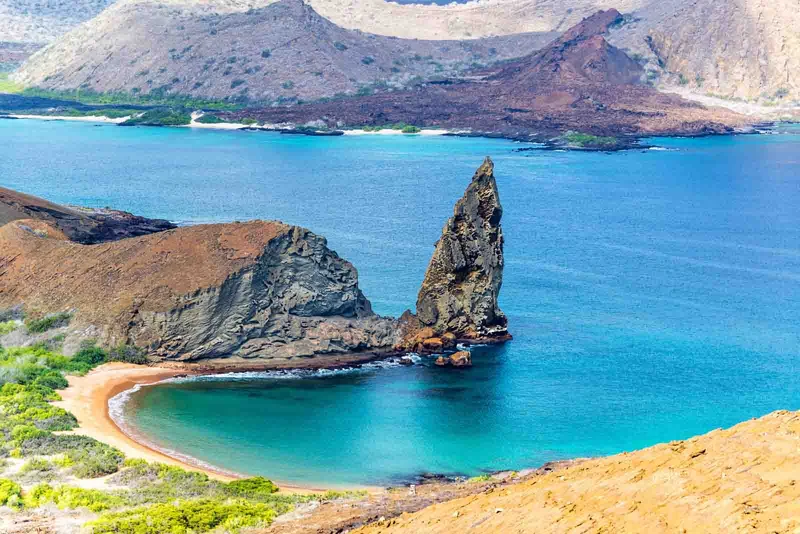
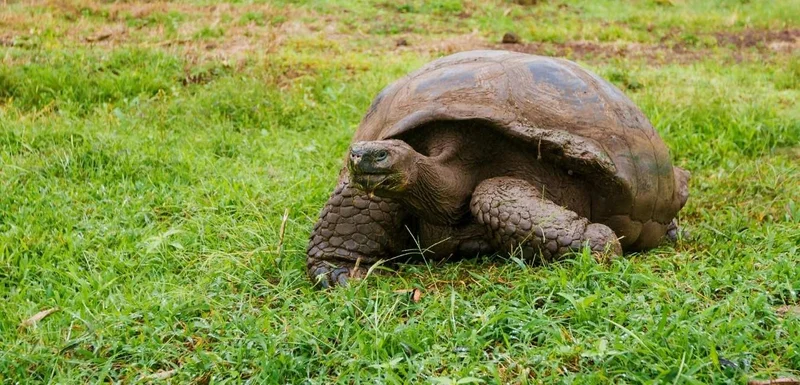
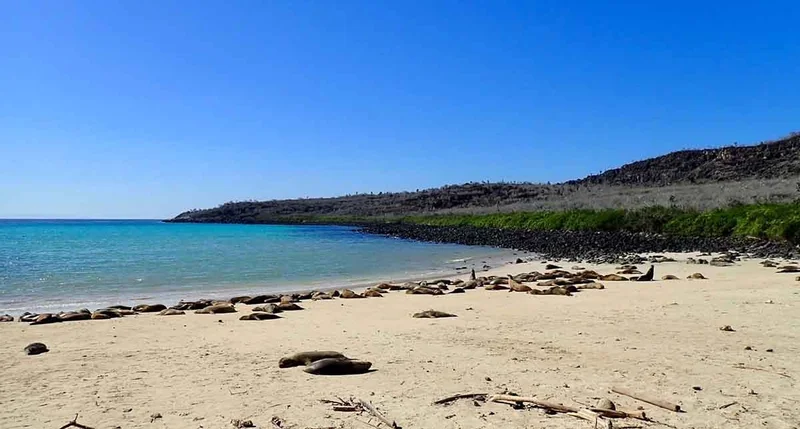

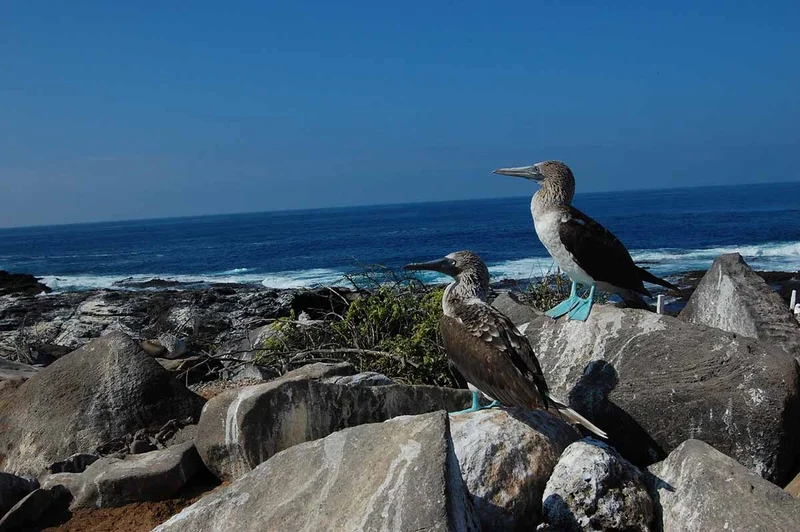

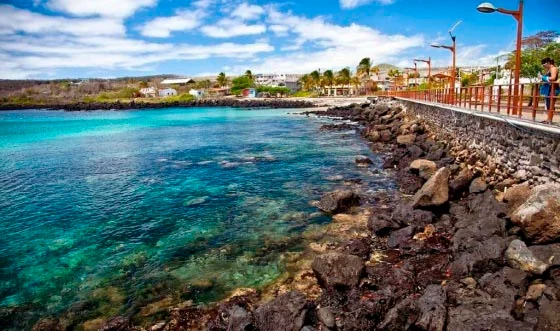
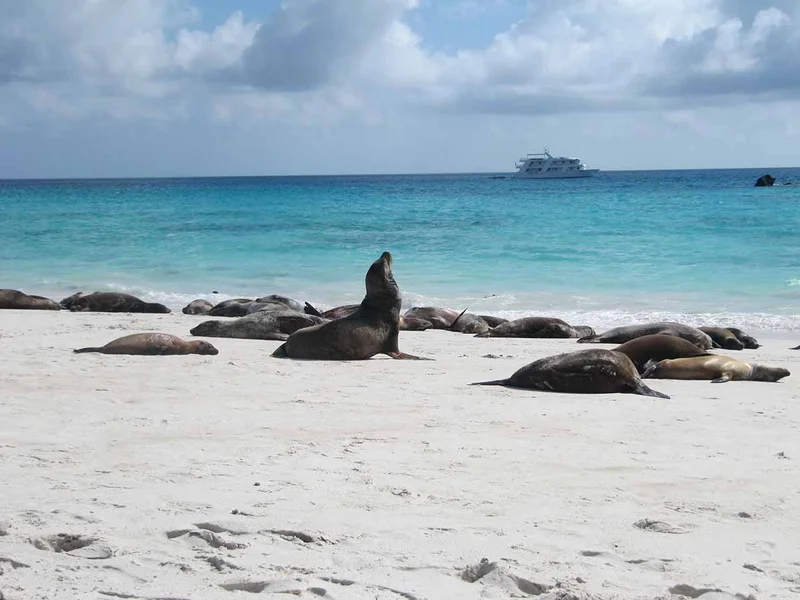

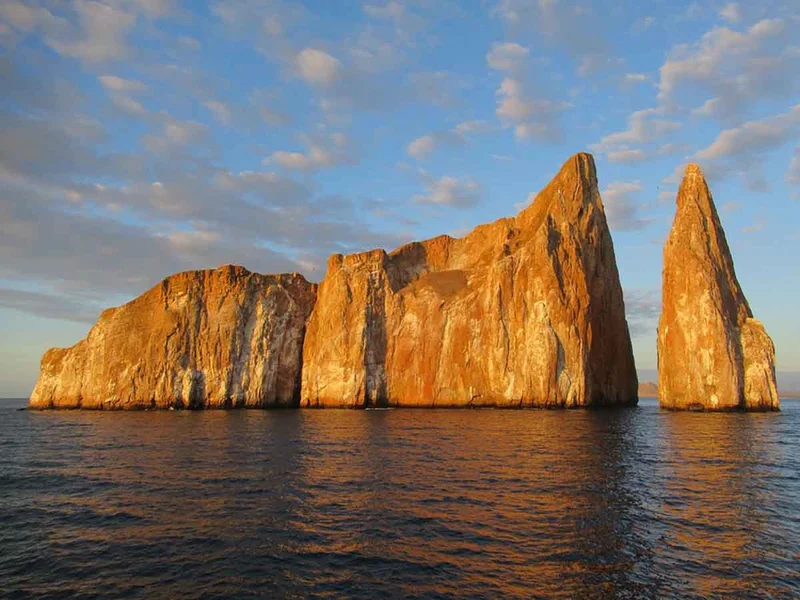

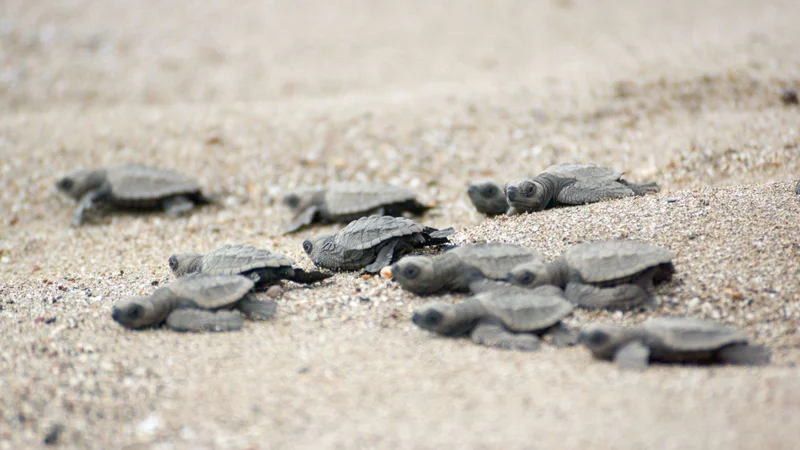

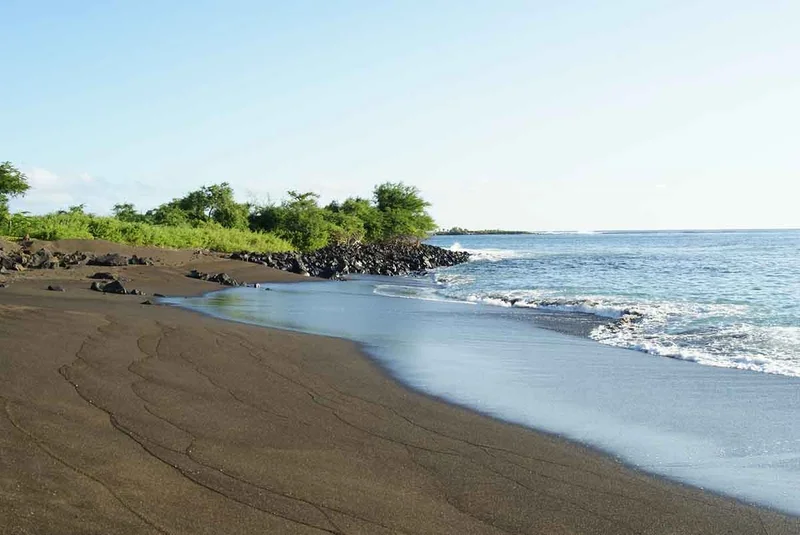
8 Day Galapagos Itinerary Includes
- Scheduled visits and activities with a professional bilingual guide
- All meals on board, snacks, purified water, tea and coffee
- Accommodation in standard cabin / bunk with private bathroom and air conditioning
- Assistance 24/7 during the trip
8 Day Galapagos Itinerary Does not Include
- Air tickets to / from Galapagos from / to Quito, Guayaquil or combined route
- Entrance to the Galapagos National Park US $ 200 p.p. (cash in the Islands)
- Galapagos Control Card US $ 20 p.p. (at the airport before check-in)
- Soft and alcoholic drinks on board; personal expenses, extras and tips guide and crew (cash)
- Rent of snorkeling equipment and wet-suits on board (in cash)
- Travel insurance with medical, cancellation and other unforeseen coverage
- Other services in Continental Ecuador and not specified in the program
Itinerary Map

Animals you might see on this itinerary:
More information about the Galapagos Islands you visit in this 8 day itinerary:
Southern Isles of Galapgos 8-Day Cruise - Nemo II Catamaran
Why travel with us?
Similar Itineraries
